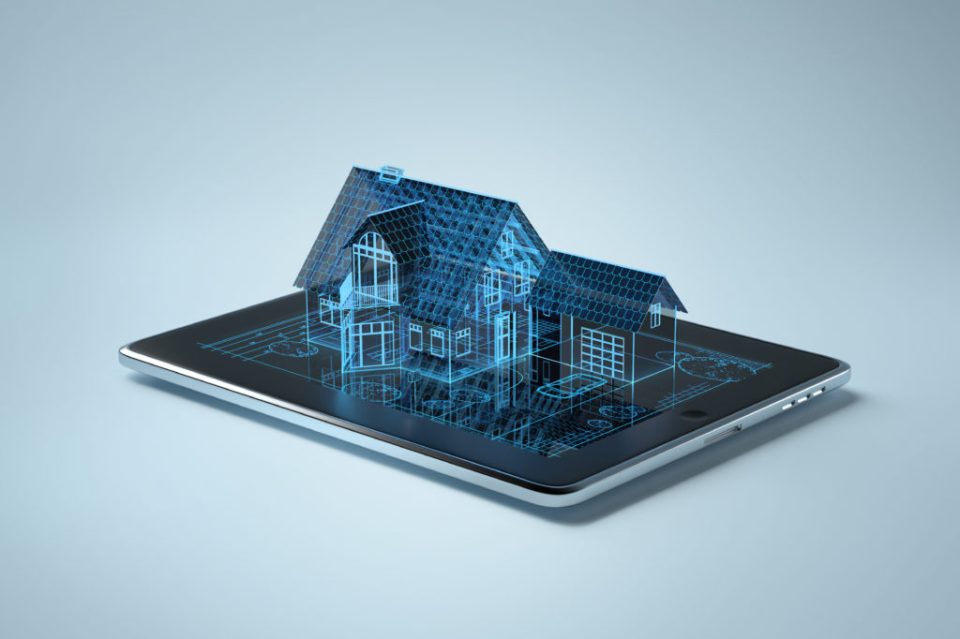In recent years, the evolution of smart home technology has brought an unprecedented level of convenience, control, and efficiency to our daily lives. Among the many innovations that have transformed how we interact with our homes, home assistants—powered by artificial intelligence (AI)—have played a central role. These smart devices have not only revolutionized how we manage our homes but have also led the way in redefining the concept of a connected living space. Today, we find ourselves at the cusp of a new wave of home assistant trends, each of which brings new features and possibilities that make our homes more intuitive, responsive, and interconnected.
As we look to the future of smart homes, here are some of the most exciting new trends in home assistants that promise to further transform the way we live.
1. Voice Control as the Central Hub of Home Automation
Voice control has long been the cornerstone of smart home devices, with platforms like Amazon Alexa, Google Assistant, and Apple Siri allowing users to control their homes through simple spoken commands. However, the latest advancements in voice technology are making voice control even more sophisticated and seamless.
Voice assistants have become the central hub for managing not only home devices but also services like entertainment, home security, and even household chores. By integrating deeper into users’ daily routines, home assistants are shifting from passive command responders to proactive, task-managing tools. For instance, voice assistants are now capable of executing more complex multi-step tasks without the need for manual input. You can ask your assistant to turn off the lights, adjust the thermostat, and even play your favorite music all with one command.
The new wave of voice control is also more intuitive, understanding context and nuances in natural language. This means you no longer need to speak in rigid commands but can engage in more conversational interactions. Voice assistants are also improving at recognizing different voices in the household, allowing for personalized experiences and access to individual preferences.
2. Enhanced Integration with IoT (Internet of Things)
The true potential of smart homes lies in the ability of devices to communicate with each other, forming a seamlessly interconnected ecosystem. The rise of the Internet of Things (IoT) has played a pivotal role in making this a reality, and home assistants are now becoming more adept at managing IoT ecosystems.
Rather than simply controlling isolated devices, the latest home assistants are designed to manage entire networks of connected devices that work together. For example, smart thermostats can now communicate with smart blinds to optimize energy use based on the time of day and weather conditions. Similarly, your smart refrigerator can send you alerts about expiring food, while your smart oven can begin preheating as you make your way home. By integrating IoT into home assistants, the entire home becomes an intelligent, responsive system capable of managing and optimizing every aspect of daily life.
This interconnectedness ensures that the various devices in your home don’t function in silos but rather work together to create a harmonious and energy-efficient living environment.
3. AI-Powered Predictive Capabilities
Artificial intelligence has been a driving force behind the evolution of home assistants, and one of the most exciting new trends is the development of AI-powered predictive capabilities. Instead of merely reacting to commands, AI-enhanced home assistants are now capable of learning your preferences and anticipating your needs.
For instance, a smart home assistant might learn the times of day when you typically adjust the thermostat or turn on the lights. Based on this data, it could automatically make adjustments before you even ask. Imagine arriving home to a perfectly lit space with the ideal room temperature, all without having to lift a finger. These predictive capabilities are not limited to just comfort—home assistants can also forecast your needs based on patterns, such as knowing when you’re likely to need more groceries or even reminding you about upcoming appointments.
This predictive intelligence offers an entirely new level of convenience and personalization, as the smart assistant becomes a proactive partner in managing your home, anticipating your habits, and helping streamline your day-to-day life.
4. Increased Privacy and Security Features
As smart homes become increasingly complex and interconnected, privacy and security concerns have become a major focus for both consumers and manufacturers. Home assistants have taken significant steps to address these concerns by offering enhanced security features and privacy controls.
One of the most notable trends is the shift towards more secure authentication methods. Biometric recognition, such as facial or voice recognition, is becoming a key feature in new smart home assistants. This allows for more secure and personalized access to home systems, ensuring that only authorized users can control sensitive devices like smart locks or home security systems. Some systems now also include end-to-end encryption, ensuring that your conversations with voice assistants remain private.
Moreover, new privacy-focused options allow users to have more control over what data is collected and how it is used. For example, many home assistant devices now offer the ability to mute or turn off the microphone when not in use, providing peace of mind for those concerned about eavesdropping. The integration of privacy-focused features with voice assistants is helping to build trust with users, allowing them to embrace the smart home revolution without compromising on their personal security.
5. Smart Home Health and Wellness Integration
Another growing trend in home assistants is the integration of health and wellness features. As smart homes continue to evolve, home assistants are expanding beyond traditional home management to become tools for improving overall well-being.
Smart assistants now offer various health-related features, from tracking your sleep patterns to monitoring indoor air quality. For example, smart air purifiers can be linked to your home assistant, alerting you when air quality drops below optimal levels and automatically adjusting settings to improve ventilation. Additionally, some home assistants now integrate with fitness tracking devices, allowing them to provide you with insights into your physical activity levels and offer recommendations for improvement.
Voice assistants can also play a role in mental health, offering mindfulness and relaxation routines. From guiding you through meditation exercises to playing calming music or sounds, smart assistants can help create a more serene and wellness-oriented home environment. This integration of health-focused features aligns with a broader trend of using technology not just for convenience but also for fostering a healthier, more balanced lifestyle.
6. Energy-Efficiency and Sustainability Features
With growing concerns over climate change and rising energy costs, there has been a significant push towards making homes more energy-efficient and sustainable. Home assistants are increasingly being designed to help homeowners monitor and reduce their energy consumption, contributing to a more eco-friendly lifestyle.
Smart thermostats and lighting systems now feature enhanced energy-saving settings, automatically adjusting based on factors like occupancy or time of day. Home assistants are capable of integrating with smart energy meters, providing real-time data on electricity usage and offering tips for saving energy. Some assistants even help optimize energy use across multiple devices, ensuring that your home is not only smarter but also more sustainable.
By integrating sustainability features, home assistants are making it easier for homeowners to reduce their environmental footprint without sacrificing comfort or convenience. This trend reflects the growing demand for eco-conscious solutions in the home technology space.
7. Better Integration with Multi-Device Environments
As more people adopt various smart devices—ranging from wearables and smartphones to refrigerators and security systems—the need for seamless multi-device integration has become critical. The latest home assistants are improving at managing multiple devices across different platforms, ensuring that they work together in harmony, regardless of the brand or manufacturer.
New features like multi-device syncing allow home assistants to not only control devices from the same manufacturer but also facilitate cross-platform interactions. This ensures that whether you’re using Google Home, Amazon Alexa, or Apple HomeKit, your devices can communicate effectively with one another, offering a truly integrated smart home experience. This cross-platform compatibility is an essential trend for users who want to build their smart homes using a range of different brands without facing compatibility issues.
Conclusion
The rapid advancements in home assistant technology have opened the door to new and exciting possibilities for the smart home of the future. From improved voice control to predictive AI, better privacy and security features, and the integration of health and sustainability elements, the latest trends in home assistants are making our homes more intuitive, responsive, and energy-efficient than ever before.
As smart home technology continues to evolve, it is clear that the next generation of home assistants will play an even more significant role in transforming how we live, work, and interact with our environment. With these innovations, homeowners can look forward to a future where technology works seamlessly to make life more convenient, secure, and sustainable. The smart home revolution is just beginning, and the possibilities are truly endless.

